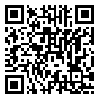BibTeX | RIS | EndNote | Medlars | ProCite | Reference Manager | RefWorks
Send citation to:
URL: http://bcn.iums.ac.ir/article-1-609-fa.html
Objective: The present study aimed to review the literature on non-pharmacological interventions used to treat stereotyped and repetitive behaviors by a systematic method.
Methods: Two authors independently performed a search strategy on Medline/PubMed, Scopus and PsycINFO on English articles published up to April 23, 2014 with relevant search keywords. We also reviewed the bibliographies of retrieved articles and conference proceedings to obtain additional citations and references. We used those articles that address any non-pharmacological interventions on reducing stereotyped and repetitive behaviors in preschool children with autism. Four independent reviewers screened relevant articles for inclusion criteria and assessed the quality of eligible articles with CONSORT checklist.
Results: In our search, 664 relevant articles were found. After removing duplicates and screening based on title, abstract, and full text, 15 high quality studies were finally included in data analyses. The included articles were published from 1987 to 2013. Three studies were designed as A-B, two as A-B-A and reminders as A-B-A-B. The data and results of 3 clinical trials were synthesized; two of them were parallel randomized clinical trial and another one was designed as cross-over. Interventions were completely heterogeneous in case studies, including non-contingent auditory stimulation, response interruption and redirection, teaching the children to request assistance on the difficult tasks, family-implemented treatment for behavioral inflexibility with treatment approach, vocal or motor response interruption and redirection, brushing, water mist treatment, exposure response prevention, tangible reinforcement or social reinforcement, and music. Interventions in clinical trials included touch therapy, kata techniques training program, and aerobic exercise.
Conclusions: The results of our review indicate that different kinds of non-pharmacological interventions can be used to treat repetitive behaviors in children with autism, however, sufficient evidence for their effectiveness does not exist. Future research using more precise methods (RCTs) can clarify that which methods and techniques are effective in reducing repetitive behavior of children with autism.
دریافت: 1395/4/14 | پذیرش: 1395/9/10 | انتشار: 1395/12/11
| بازنشر اطلاعات | |
 |
این مقاله تحت شرایط Creative Commons Attribution-NonCommercial 4.0 International License قابل بازنشر است. |





